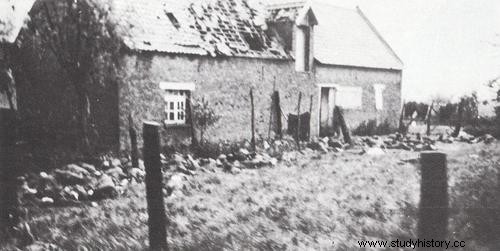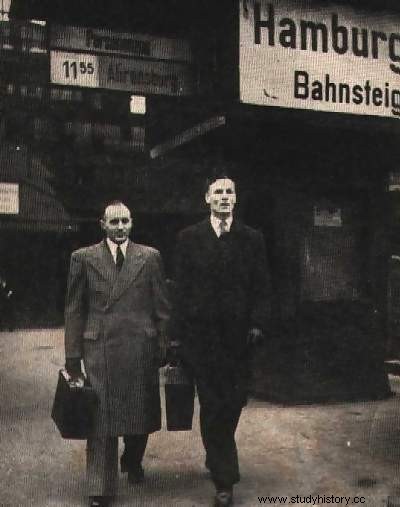Before the advance of the German forces, on May 26, 1940, the British Marshal John Gort , Commander-in-Chief of the British Expeditionary Force (BEF), ordered the evacuation of allied troops on French soil... France had fallen. From various ports along France's northern coast, notably Dunkirk, more than 200,000 British soldiers and some 100,000 French and Belgian soldiers were evacuated. But not all units made it…
One of the units that was to cover the withdrawal of the BEF was the 2nd Battalion of the Royal Norfolk Regiment . When they communicated their position on May 27, 1940, the High Command warned them that they had been isolated and that they could not send support. The commanding officer, Major Lisle Ryder , decided to fortify himself in a country house in the village of Le Paradis (France) and resist. Well armed and with plenty of ammunition, they managed to withstand the Wehrmacht attacks for 6 hours… until the artillery arrived. The bombardment began to destroy the building, the wounded and dead increased and the ammunition ran out... Ryder and the 98 survivors could not take it anymore. With a white flag in hand, they left the building and surrendered... but not to the contra forces they had been fighting but to the Totenkopf Division (Skull). ) of the SS who had just arrived - a terrible mistake. In front was Fritz Knoechlein , a Nazi fanatic... who did not like to take prisoners. The 99 Britons, including many wounded, were herded out of the village and taken to a nearby farm. There, two machine guns were waiting for them... for seconds the sound of the shots mixed with the screams of the executed soldiers. With the bodies lying on the ground, Fritz Knoechlein ordered those who had not yet died to be finished off with bayonets. When they thought they had finished their job, the firing squad returned with the rest of the division and left the scene. The news of the massacre spread like wildfire through the German ranks and General Erich Hoepner , commander of the German forces in France, ordered an investigation into the event. Much to his regret, since he was not at all friendly with the methods used by the SS, he had to close the case under strange circumstances and "accept" Knoechlein's version:"the British had used expanding bullets (dum dum) prohibited by the Hague Convention of 1899 «.

Photograph of the massacre
But not all had died... Although wounded, soldiers Albert Pooley and William O'Callaghan they managed to survive. They left that place of death and took refuge in a pigsty. For 3 days they survived by eating raw potatoes and drinking rainwater, until they were captured by the Wehrmacht. O'Callaghan spent the rest of the war in a prison camp and Pooley spent three years in a military hospital recovering from horrific injuries. During those three years, an idea occupied his thoughts 24 hours a day: survive to tell the world about that massacre and that the culprit pay for his 97 executed companions after surrendering . In 1943 he was repatriated and told his superiors about the massacre, but nobody paid attention to him because it was thought that the German army was not capable of such atrocities. Only when the war ended and O'Callaghan corroborated his story did the British authorities begin the search for Fritz Knoechlein. When he was captured, Albert Pooley and William O'Callaghan identified him in separate lineups. He was tried for war crimes on October 11, 1948 and hanged in Hamburg on January 28 of the following year.

Pooley and O'Callaghan on trial day
Source:WWII in Color, War History Online
